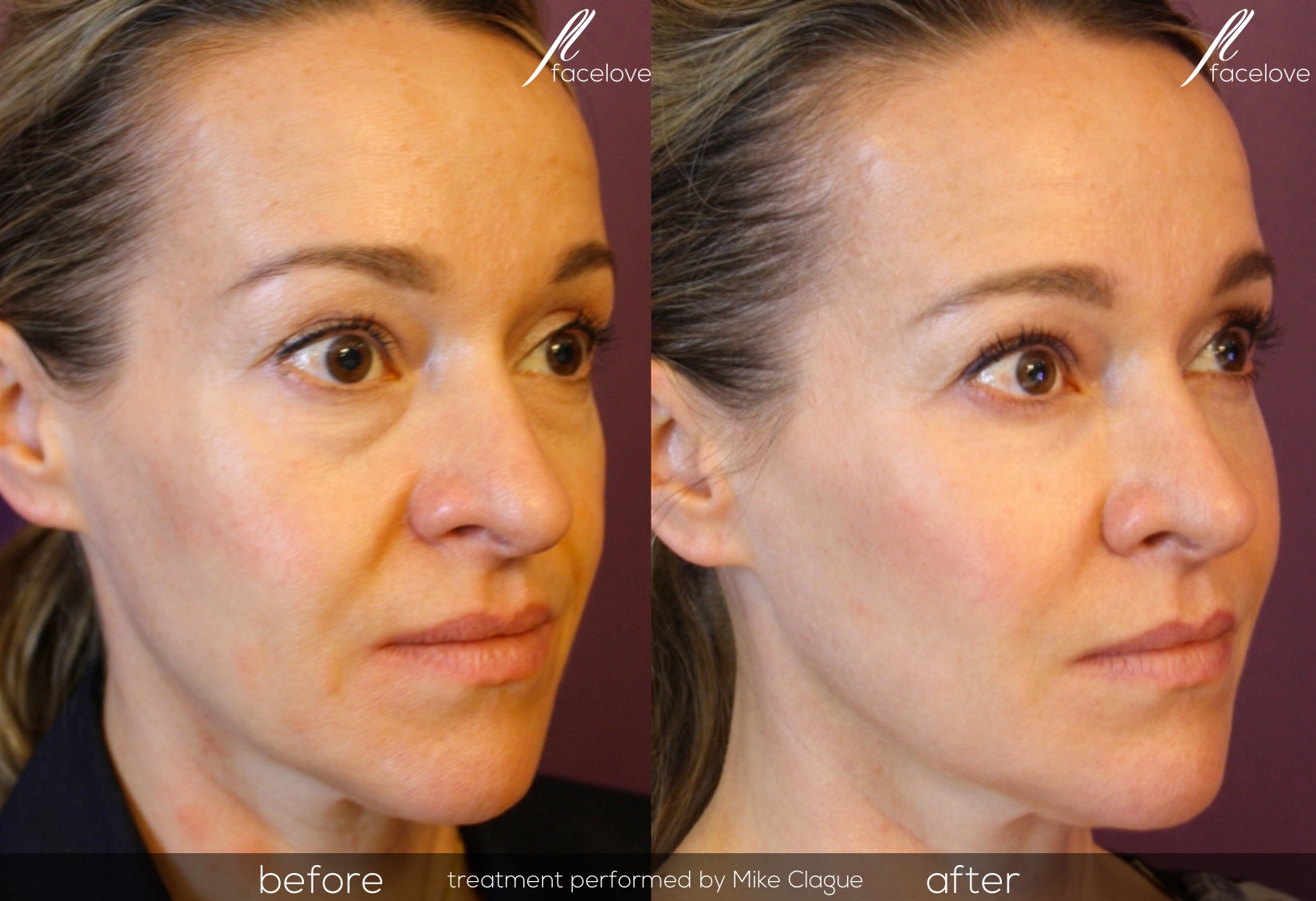Health
Dermal Filler Market to Make Great Impact In Near Future


By Modupe Gbadeyanka
Dermal filler is the non-invasive treatment for facial rejuvenation and are used to as anti-ageing agents. As people age, facial skin begins to lose its flexibility and natural hydration that helps support, shape and add volume to the face. This leads to wrinkles on the face, deep lines and sagging of the skin. Dermal fillers are injectable gels composed from either natural or synthetically derived materials like hyaluronic acid. Dermal fillers gently lift and pump up the skin to restore the lost collagen owing to aging process. Dermal fillers also enable the body to generate its own collagen which can help in giving a natural and youthful facial appearance. Dermal filler treatment is highly effective as its results last from seven to 26 months, depending upon the type of dermal filler used. Dermal filler treatment takes 25-50 minutes with or without local anesthesia which can vary according to the patient skin and physical condition.
Dermal FillerMarket: Drivers and Restraints
Increasing number of patient with various cosmetic skin problems such as scars, deep lines and wrinkles, which is rising due to the imbalance in diet, insomnia, stress and tension, are the major factors which is fueling demand for dermal fillers. Dermal filler treatment is fast and easy for various cosmetic problems with a minimal amount of discomfort and downtime. The main factor which limits the growth of the global dermal filler market is the high cost of treatment.
Dermal Filler Market: Segmentation
Global dermal fillermarket is classified on the basis of product type, therapeutic area and geography
Based on product type, the global dermal filler market is segmented into the following:
Absorbable or Biodegradable
Non-Absorbable or Non-Biodegradable
Based on therapeutic area, the global dermal filler market is segmented into the following:
Wrinkles
Deep Facial Lines
Sagging Skin
Scars
Dermal Filler Market: Overview
Dermal filler is the treatment which is used to cure the natural break down of collagen and elastin fibers as people age. This type of natural breakdown occurs owing to the factors such as sun exposure, poor diet, stress and smoking. Dermal fillers can be classified into absorbable and non-absorbable. Absorbable dermal filler treatment last six to 12 months whereas non-absorbable fillers can last for 4-6 years. Hyaluronic acid is used in the gels which are used as fillers in dermal filler treatment. A very tiny needle is used to inject the fillers into the targeted therapeutic areas of the patient body.
Dermal Filler Market: Region-wise Outlook
The global dermal filler market is expected to register a healthy CAGR for the forecast period. Depending on geographic region, global dermal filler market is segmented into seven key regions: North America, South America, Eastern Europe, Western Europe, Asia Pacific, Japan, and Middle East & Africa. North America held largest share in the global market of dermal filler followed by Europe, Japan and Asia Pacific owing to high occurrence of several skin problems among the population, increasing number of dermatology patients and increasing application in acne scar treatments. The developing nations in APAC and MEA hold huge potential for growth in the global dermal filler market, due to its quick and accurate results without any risk on skin.
Dermal Filler Market: Key Players
Some of the key participating global players in dermal fillerglobal market are Allergan, Inc., Galderma, Merz Aesthetics, Cynosure, Syneron, AQTIS Medical, Bioha Laboratories, Suneva Medical and Cytophil, Inc.
Health
Mums Feel Warmth Initiative Raises Postpartum Depression Awareness

By Modupe Gbadeyanka
A transformative webinar to raise awareness on postpartum depression (PPD) by nursing mothers has been organised by MSc Media and Communication students from the School of Media and Communications of the Pan-Atlantic University.
The programme titled Beyond Baby Blues: Understanding and Overcoming Postpartum Depression was held on January 7, 2025.
It was put together by the students under the Mums Feel Warmth initiative, with experts in the field invited to speak on the matter aimed at empowering mothers and fostering a sense of reassurance.
The webinar was to highlight the journey through postpartum depression, offering a message of hope, resilience, and the importance of mental health support for mothers everywhere.
One of the speakers, Dr Laja Odunuga, who is the Care Coordinator for AVON HMO, explained the difference between the common “baby blues” and the more severe, long-lasting PPD.
The discussion highlighted how PPD can manifest not just as sadness but through severe fatigue, disconnection from the newborn, and loss of interest in activities, which can last well beyond the typical two-week period associated with baby blues.
Another expert, Ms Otomfon Ibanga, the Assistant Lead Nurse for Q-Life Family Clinic, emphasised the role of support systems, urging families and friends to be vigilant for signs of PPD and to provide a nurturing environment.
She also discussed prevention strategies, including prenatal planning for support structures and post-delivery management through therapy or medication.
On his part, Dr Chimaraoke Obialo, who is the Medical Director of Life Amada Health Consultancy, addressed the stigma surrounding PPD, advocating for education to transform societal perceptions from judgement to support.
The webinar underscored the need for community involvement, not just in recognising symptoms but in actively participating in the healing process by offering emotional and practical support.
The Mums Feel Warmth webinar was more than just an educational session; it was a call to action for society to embrace and support new mothers dealing with PPD.
By fostering open conversations and providing platforms for sharing experiences, Mums Feel Warmth continues to lead the charge against the stigma of PPD.
The commitment shown by the panellists and attendees alike promises a future where every mother has access to the understanding and care needed to navigate through the complexities of postpartum depression, ensuring that the joy of motherhood is not overshadowed by mental health challenges.
Mums Feel Warmth, with its core values of empathy, compassion, hope, community, and education, speaks to the Sustainable Development Goal 3, advocating for good health and well-being.
The initiative is breaking the silence around PPD, a condition that can significantly impact new mothers in the critical period following childbirth.
Health
NCDC Monitors HMPV Situation, Affirms Nigeria at Moderate Risk

By Adedapo Adesanya
The Nigeria Centre for Disease Control (NCDC) says the country is at “moderate” risk for Human Metapneumovirus (HMPV), a virus that leads to an upper respiratory tract infection with symptoms like cough, fever, and nasal congestion.
In a public health advisory, the Nigerian health agency said the federal government is closely monitoring the outbreak of the virus and is taking safety measures to “strengthen the country’s preparedness and response capacity”.
Recent reports indicate a significant rise in HMPV cases in China, as well as increased respiratory infections linked to HMPV in countries such as the United Kingdom (UK), France, and Germany, particularly during the winter season.
The NCDC said it conducted a risk assessment for the HMPV in collaboration with the Federal Ministry of Health and partners such as the World Health Organization (WHO), the US Centres for Disease Control and Prevention (USCDC), and the UK Health Security Agency (UKHSA).
“The assessment classified the risk of HMPV for Nigeria as moderate. This evaluation will inform and guide preparedness efforts, decision-making, and response strategies to mitigate potential impacts,” the advisory said.
It said the NCDC is working to give Nigerians “timely, accurate information and guidance to keep the Nigerian public informed and prepared”.
NCDC noted that it “in collaboration with Port Health Authorities, is taking proactive steps to ensure robust preparedness at all international points of entry (PoEs) in response to the dynamic risk assessment for Human Metapneumovirus (HMPV).
“These measures are designed to mitigate the potential risk of HMPV transmission through international travel.”
HMPV was first identified in the Netherlands in 2001 and the virus spreads through direct contact between people or when someone touches surfaces contaminated with it.
Children under two are most vulnerable to the virus alongside those with weakened immune systems such as the elderly and those with advanced cancer, according to medical experts.
There have also been worries that this could be like COVID-19, but experts have eased the fear as they are not similar because pandemics are typically caused by novel pathogens, which is not the case for HMPV.
Health
Digitising Healthcare With Local Realities in Mind: Shaping The Future of Healthcare in Africa

eHealth Africa (eHA) has urged governments and stakeholders to explore the critical factors beyond technology that are essential for the deployment of digital health solutions for the long-term success of public health systems across Africa. Data-backed interventions will help streamline operations and enable the formulation of interventions that appreciate the cultural norms when addressing the immediate needs of different communities within the region.
Speaking during a panel session at the Global Digital Health Forum 2024 in Nairobi, eHealth Africa’s Executive Director Atef Fawaz emphasised the importance of integrating technology with local cultures and addressing community-specific needs. “Understanding the unique healthcare challenges in each country allows us to deploy tech solutions that truly make an impact.”For instance, eHealth Africa successfully delivered over 5.8 million vaccines (5,801,209) to 351 primary healthcare facilities across states in Nigeria which was made possible through the deployment of the innovative Logistics Management Information System (LoMIS) application.
“The system significantly improved the availability of vaccines for Routine Immunisation (RI), ensuring timely and efficient distribution while eliminating stockouts at primary healthcare facilities. This intervention highlights our commitment to strengthening immunisation programs and enhancing healthcare delivery at the grassroots level,” he said.
In his contribution, Abdulhamid Yahaya, the Deputy Director of Global Health Informatics highlighted the need to understand the local cultural, social, and regulatory landscape to build solutions that are designed with local realities in mind.
eHealth Africa Board Member Micheline Ntiru said using technology provided stakeholders among them global health leaders, tech innovators, and development experts as well as local communities a platform to create the right solutions that work within the constraints of each community, and with the support of local leadership.
For instance, local health workers have been using mobile-based reminder systems to improve compliance and overall health outcomes while some local immunisation centres have been sending SMS reminders to parents as well as to provide educational messages about the diseases they protect against. Mobile phones, now available in nearly 80 per cent of African homes, can also be used during emergencies to dispatch mass announcements about satellite clinic locations and schedules.
According to the World Health Organisation, increased use of the Internet, email, social networking sites and availability of mobile phones facilitates the deployment of eHealth solutions, applications and services towards the improvement of national health systems. The use of technological eHealth solutions could also be used to encourage positive lifestyle changes to prevent and control common diseases.
The panel moderated by Ota Akhigbe, Director of Partnerships and Programs comprised of Ms Ntiru (Delta40 ventures), Mr Yahaya (eHealth Africa), Chief Impact Officer at Tiko – Serah Malaba, Dr Olamide Okulaja (Maisha Meds), Audere Chief Executive Officer Dr Dino Rech, and Rachel Alladian from Jacaranda. They discussed how strategic partnerships, regulatory compliance, and a deep understanding of local contexts are crucial for driving digital health innovations that can succeed in diverse regions.
The GDHF forum was attended by health scholars, researchers, and representatives from the Ministry of Health in Ethiopia, Tanzania, Kenya, Malaysia, Somalia and Sri Lanka as well as representatives from the World Bank, medicine manufacturers, technology vendors, UN agencies among others.
-

 Feature/OPED5 years ago
Feature/OPED5 years agoDavos was Different this year
-
Travel/Tourism8 years ago
Lagos Seals Western Lodge Hotel In Ikorodu
-

 Showbiz2 years ago
Showbiz2 years agoEstranged Lover Releases Videos of Empress Njamah Bathing
-

 Banking7 years ago
Banking7 years agoSort Codes of GTBank Branches in Nigeria
-

 Economy2 years ago
Economy2 years agoSubsidy Removal: CNG at N130 Per Litre Cheaper Than Petrol—IPMAN
-

 Banking2 years ago
Banking2 years agoFirst Bank Announces Planned Downtime
-

 Sports2 years ago
Sports2 years agoHighest Paid Nigerian Footballer – How Much Do Nigerian Footballers Earn
-

 Technology4 years ago
Technology4 years agoHow To Link Your MTN, Airtel, Glo, 9mobile Lines to NIN












